Chiropractic Practice Privileges Have Evolved to Make DCs the Eclectic Physicians of our Modern Era
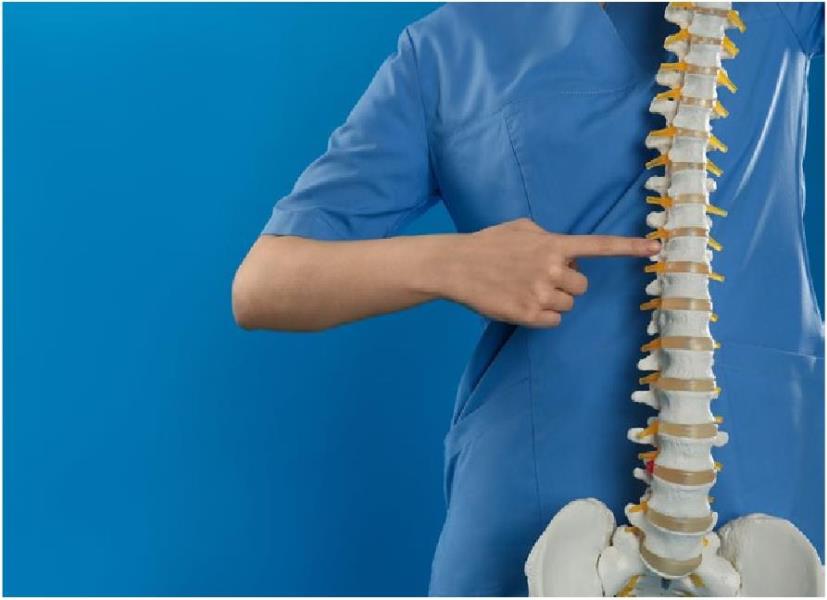
PRIOR TO ABRAHAM FLEXNER’S INFAMOUS report on the status of medical education, medicine was divided into three camps: eclectics, homeopathic physicians, and allopathic doctors. All three schools awarded their graduates an MD degree. Eclectic physicians were very popular in the late 19th and early 20th centuries and were known for their pragmatic approach to medicine, using a variety of treatments that included herbal remedies and other natural therapies. They practiced under a philosophy of “alignment with nature” and made choices from all the different medical schools of thought.
The Flexner Report, published in 1910, significantly impacted medical education in the United States, and the eclectic movement was largely dismantled due to its emphasis on the requirement for science-based and research-based training.
Key aspects of eclectic physicians before the Flexner Report:
• Pragmatic approach: Eclectics embraced a practical, nondogmatic approach, using whatever methods they found most effective for their patients, often including botanical remedies.
• Emphasis on herbal remedies: They heavily relied on herbal medicine and natural therapies, drawing upon both Western and Native American herbal traditions.
• Influence of different schools of thought: Eclectic practitioners drew from various medical schools, including homeopathy and physiomedicalism.
• Opposition to certain medical practices: They often opposed techniques like bleeding, purging, and the use of mercury compounds, common in what comprised the conventional medicine of that time.
• Impact of the Flexner Report: The Flexner Report advocated for a scientific and research-based approach to medical education but led to the decline of the eclectic and other alternative schools of medicine, as they were seen as lacking scientific rigor.
• Decline after the Flexner Report: Many eclectic medical schools were either forced to adapt to the Flexner Report’s standards or closed down, leading to a significant decline in the movement.1
“As we know, chiropractic was founded in 1895 by Daniel David “D.D.” Palmer in Davenport, Iowa.”
Chiropractic’s origins lay in the folk medicine practice of bone setting, in which untrained practitioners engaged in joint manipulation or resetting fractured bones or dislocated joints. As we know, chiropractic was founded in 1895 by Daniel David “D.D.” Palmer in Davenport, Iowa.
The original scope of chiropractic practice, as envisioned by Daniel David Palmer and his son B.J., focused on the diagnosis and treatment of spinal subluxations, believed to be the root cause of various health problems, and were resolved through spinal manipulation.2 Palmer’s theory centered on the idea that misalignments in the spine led to the vertebral subluxation complex, which disrupted the nervous system and negatively impacted overall health, as we are all aware.
• Spinal manipulation: The primary treatment method for the chiropractic profession was spinal manipulation, or adjustments, aimed at correcting spinal subluxations and restoring proper nerve function.
• Early philosophy: Chiropractic’s early philosophy was rooted in vitalism, naturalism, and spiritualism, emphasizing the body’s inherent ability to heal itself.
• Distinction from allopathic medicine: Early on, chiropractic aimed to distinguish itself from conventional medicine, focusing on a “drugless” approach to healing.
Palmer’s first chiropractic adjustment was said to have been administered to a deaf janitor named Harvey Lillard, who then regained his hearing. Palmer distinguished his work by noting that he was the first to use short-lever, high-velocity, low-amplitude (HVLA) joint manipulation techniques, adapting the spinous process and transverse processes as mechanical levers.
Current Scope
While the original scope focused on spinal manipulation, modern chiropractic practice has expanded to include broader and more sophisticated methods of diagnosis and treatment, including orthopedic and neurological examinations, and addressing more than musculoskeletal disorders. The authors surmise that the broadened scopes of practice reflect inherent interests of the profession and the willingness of the public to place trust in well-trained and competent chiropractic physicians.
A preeminent example of this trust is reflected in the number of states permitting DCs to perform, for example, such services as well-woman exams and even deliver babies. Here are the results of a look-see into scopes of practice in several different states as reported by Jann Bellamy, JD.
• Obstetrics: Nine states (two require additional training); can order an obstetrical exam in two states. Chiropractors can sign birth certificates in 10 states.
• Breast exams: Twenty-nine states (two with additional training); can order in another three. Mammography was not included in the survey, but thermography, which is used (but should not be) for diagnostic breast imaging, can be performed by chiropractors in 32 states (six with additional training) and can be ordered in nine states.
• Bimanual pelvic exam: Twenty-four states (one with extra training); can order in an additional five.
• Speculum exam: Twenty-four states (two requiring additional training); can order this in another six.
• Recto-vaginal exam: Twenty-three states (two permissible with further training); can order in five more.
• Pap smear: Perform in 17 states; can order in 10 other jurisdictions.3
Early chiropractic practice was, arguably, much more limited in scope — basically, hands-on spinal adjustments only. In contradistinction, six jurisdictions, including Oregon, Idaho, Utah, Oklahoma, New Mexico, and Florida, currently regulate chiropractic with particularly advanced practice provisions. Oregon Advanced Chiropractic Scope of Practice
Here, we find that “drugs” means all medicines and preparations and all substances, except over-the-counter (OTC) nonprescription substances, food, water, and nutritional supplements taken orally, used or intended to be used for the diagnosis, cure, treatment, mitigation or prevention of diseases or abnormalities of humans, which are recognized in the latest editions of the official United States Pharmacopoeia, official Homeopathic Pharmacopoeia, official National Formulary, or any supplement to any of them or otherwise established as drugs. Therefore, this section patently ascribes the use of OTC medications to be within the DC’s scope of practice.
Administered only as prescribed and diagnosed by a licensee under the applicable standard of care and includes providing emergency first aid, correcting mild to moderate hypoxia to reduce the work of the heart, and administering with precision based on age and respiratory status.
Chiropractic physicians observe and are subject to all state and municipal regulations relating to the control of contagious and infectious diseases, sign reports of live birth and death, and report all matters pertaining to public health laws to the proper health officers, the same as other practitioners.
Minor surgery is the use of electrical or other methods for the surgical repair and care incident thereto of superficial lacerations and abrasions, benign superficial lesions, and the removal of foreign bodies located in the superficial structures, as well as the use of antiseptics and local anesthetics in connection therewith.
In Oregon, chiropractors can practice obstetrics but require additional training and certification beyond their standard chiropractic education. They must also pass a certification exam in obstetrics and fulfill specific requirements outlined in Oregon Administrative Rules.4
Idaho Advanced Chiropractic Scope of Practice Licensed chiropractic physicians, under this chapter, certified in clinical nutrition, may obtain and independently administer the following parenteral prescription drug products:
• Vitamins: Vitamin A, all B vitamins, and vitamin C.
• Minerals: Ammonium molybdate, calcium, chromium, copper, iodine, magnesium, manganese, potassium, selenium, sodium, and zinc.
• Fluids: Dextrose, lactated Ringer’s, Plasma-lyte, saline, sterile water, adrenaline, and NCO2.5
Utah Advanced Chiropractic Scope of Practice
Utah has developed a unique approach to an advanced scope of chiropractic practice, allowing for chest physical therapy and debridement of wounds, together with cleansing and changing dressings, the use of topically applied medicinal agents, well-defined orthopedic services, homeopathic injection therapy, biopuncture, prolozone therapy, animal chiropractic, and clinical acupuncture.6
Oklahoma Advanced Chiropractic Scope of Practice In the “Sooner State,” DCs decided to immensely expand their scope of practice. This upgrade in scope of practice constituted an advanced capability in delivering acupuncture and/ or meridian therapy, homeopathy, naturopathy, injectable nutrition, and animal chiropractic diagnosis and treatment. Chiropractors are qualified to sign the following:
• Death certificates
• All other certificates, including those relating to public health.7
New Mexico Advanced Chiropractic Scope of Practice
New Mexico’s statutes allow for a certified advanced practice chiropractic physician (AP-C) to have prescriptive authority for therapeutic and diagnostic purposes. They can administer and dispense herbal medicines, homeopathic medicines, over-the-counter drugs, vitamins, minerals, enzymes, bioidentical hormones (estradiol, progesterone, and testosterone), desiccated thyroid, muscle relaxers (cyclobenzaprine), sterile water, sterile saline, Sarapin or its generic equivalent (pitcher plant), caffeine, procaine, oxygen, epinephrine, and vapocoolants.
A chiropractic formulary also includes hormones for topical, sublingual, oral-use prescription medications for topical use (NMDC Ca+2 dextromethorphan, NSAIDSs such as ketoprofen, piroxicam, naproxen, ibuprofen, diclofenac), sodium channel antagonist, homeopathic remedies requiring a prescription, homeopathic medication for injection, and glutathione for inhalation.
It is interesting to note that three states have enacted statutory provisions that would allow a chiropractor to acquire additional practice credentials.”
An AP-C may prescribe and administer live cell products, gerovital, amino acids, dietary supplements, foods for special dietary use, and a formulary that includes all substances listed above, including compounded preparations for topical and oral administration, plus a formulary for injection that includes the substances the previous detailed substances.
Dangerous drugs or controlled substances and drugs for administration by injection shall be submitted to the board of pharmacy and the New Mexico medical board for approval. It shall include, but not be limited to, the prescribing and administering of all natural agents to assist in the healing act, such as food, water, heat, cold, electricity, mechanical appliances, and medical devices; the selling of herbs, nutritional supplements, and homeopathic remedies; the administering of a drug by injection by a certified advanced practice chiropractic physician; and any necessary diagnostic procedure, excluding invasive procedures, except as provided by the board by rule and regulation. It shall exclude operative surgery, the prescription or use of controlled or dangerous drugs, and the practice of acupuncture.8’9
Chiropractic physicians in Florida enjoy an expanded practice of chiropractic medicine by adding acupuncture, nonprescription medication, and the administration of emergency oxygen and aerosol anesthetics to their core chiropractic statutes.10
Additionally, the majority of states license chiropractic doctors to include acupuncture privileges. The jurisdictions that allow the addition of acupuncture treatments to accompany chiropractic care often require additional training or certification for DCs, but not all states maintain similar requirements. Here’s a more detailed look at the situation:
Many states allow chiropractors to perform acupuncture procedures, often requiring them to obtain specific training or certification, such as the National Board of Chiropractic Examiners (NBCE). Other states may have specific training requirements, while some do not require any additional training for chiropractic physicians to engage in acupuncture practices.
• Alabama: Medical doctors, osteopaths, chiropractors, and physician assistants can all administer acupuncture with no additional training required.
• Arizona: Here, DCs can become specialists in administering “acupuncture procedures.”
• Minnesota: These chiropractors must be certified with 100 hours of training by the Minnesota Board of Chiropractic Examiners (MBCE).
• Oklahoma: Acupuncture is within a medical doctor’s scope of practice, and DCs are also permitted to practice acupuncture.
• California: Requires DCs to obtain a separate acupuncture license.
• Connecticut: Chiropractors can practice acupuncture under their chiropractic license with no additional training.
• Florida: Requires 100 hours of training and the NBCE exam.
It’s important to understand specific regulations in any state where a chiropractor intends to practice acupuncture because requirements can vary significantly. In the majority of states, a doctor of chiropractic can be certified to do acupuncture under their chiropractic license.
Acupuncture certification allows the DC to perform and bill for acupuncture (CPT codes 97810, 97811, 97813, and 97814). Using this certification is the key to building a dual chiropractic and acupuncture practice under one chiropractic license. It allows the DC to administer acupuncture personally and add this modality to their practice without hiring a licensed acupuncturist or becoming one.
The District of Columbia and 30 states presently allow DCs to add the acupuncture modality to their practice. The 30 states include: Alabama, Arizona, Arkansas, Colorado, Connecticut, Delaware, Florida, Idaho, Illinois, Indiana, Iowa, Kansas, Maine, Minnesota, Missouri, Nebraska, New Hampshire, New Mexico, North Carolina, North Dakota, Ohio, Oklahoma, South Dakota, Tennessee, Texas, Utah, Vermont, Virginia, West Virginia, and Wyoming.
The minimum number of hours of acupuncture training required varies from state to state, and some states also require the National Board of Chiropractic Examiners (NBCE) Acupuncture Examination.11 State laws, rules, and regulations can change quickly, so one needs to be aware that practice provisions are not static.
Three States Have Enacted Legislation Allowing Chiropractors to Become Naturopathic or Homeopathic Doctors
It is interesting to note that three states have enacted statutory provisions that would allow a chiropractor to acquire additional practice credentials.
• Idaho has provisions through the Board of Naturopathic Healthcare that permit chiropractic physicians to become either licensed as naturopathic doctors (ND) or registered NDs.
• Arizona has expanded provisions under the Board of Homeopathic and Integrative Medicine Examiners (ABHIME) to offer a pathway for DCs to become “homeopathic doctors (HD).”
• Nevada statutes define rules allowing chiropractors to become eligible for the Advanced Homeopathic Practitioner (AHP) credential.
Idaho Statutory Provisions Permit DCs to become Licensed or Registered Naturopathic Doctors “Under 54-5905 (1) An applicant shall be qualified for licensure as a naturopathic doctor pursuant to this chapter if such applicant possesses a current, valid, and unrestricted licensure in any state, district, or territory of the United States in chiropractic and has obtained a certificate of satisfactory completion in a naturopathic doctor curriculum consisting of at least one hundred sixty (160) credit hours, online, from an institution accredited by an accreditation agency approved by the U.S. department of education. For information about this training, send an email to pdaidaho.com. This license will allow DCs to order, obtain, and administer Legend drugs. A licensed naturopathic doctor may also use the title ‘licensed doctor of natural health’ or ‘licensed naturopathic practitioner. ’ Alternatively, one can obtain a limited ND registration without completing any additional training or testing.”12
Arizona Statutory Provisions Permit DCs to Become Licensed Doctors of Homeopathy
SB 1163 established a pathway providing acupuncturists, physical therapists, naturopaths, and chiropractic physicians to become homeopathic doctors upon completion of an approved program.
ABHIME is responsible for the licensing and oversight of the practice of homeopathic and integrated medicine in Arizona and may grant a license to practice as a doctor of homeopathy to a qualified applicant who is also licensed to practice acupuncture, chiropractic, naturopathy or physical therapy and has also completed the required program of 300 clock hours of specific studies and passes the ABHIME examination. They then use the designations homeopathic practitioner, HD, or doctor of homeopathy, but a person may use the designation “HD” or “doctor of homeopathy” only if the person holds a doctorate and is licensed pursuant to chapter 8, 14, 19 or 39 of this title.13
Documentation of at least 300 hours of formal postgraduate education is required, with at least 40 hours of the 300-hour requirement taught in a course of classical homeopathy. The remaining hours may be one or more of the treatment modalities that are recognized within Arizona as making up a “practice of homeopathic medicine.”
The ABHIME written examination consists of 115 questions covering the practice of homeopathic medicine. A passing score of at least 70% must be obtained.
To pass this examination, one must be familiar with the following 41 homeopathic remedies: aconite, antimonium tartaricum, apis mellifica, arnica, arsenicum album, baptisia, belladonna, bryonia alba, cantharis, carbo vegetabilis, chamomilla, china officinalis, cina, cuprum, drosera, eupartorium perfoliatum, ferrum phosphoricum, gelsemium, graphites, hypericum, ignatia, ipecac, kali bichromicum, lachesis, ledum pallustre, magnesium phosporicum, mercuris vivus, natrum muriaticum, nux vomica, phosphorus, podophyllum peltaltum, pulsatilla, rhus toxicodendron, ruta graveolens, silica, spongia tosta, staphysagria, sulphur, symphytum, tabacum, and urtica mens.
A required oral interview consists of a discussion of the DC’s background and credentials, and one should be prepared to answer questions posed regarding their credentials and background at that time. According to the ABHIME, unless a doctor is otherwise notified, their oral interview will be held the same day as the regularly scheduled meeting. Arizona Information Page 4 Rev 9.14 Please visit the ABHIME for further clarification regarding licensure requirements.
To become an APH in Nevada, you must apply. The Nevada Board of Homeopathic Medical Examiners (NBHME) considers the following when awarding advanced homeopathic licenses:
• The typical applicant will have obtained a bachelor’s degree or higher credential from a university approved by the board or equivalent qualifications, a certification, license, degree, or training from an approved institute in one of the following professions:
* Chiropractic physician
* Medicine (U.S. or foreign medical school)
* Acupuncturist or doctor of oriental medicine
* Homeopathic medicine or naturopathy15
* Nursing
• Completion of 400 hours of homeopathic education is required and must be approved by the NBHME. Two hundred of those hours must be completed in Nevada under the supervision of a licensed homeopathic physician.16
• After successful completion of an examination provided by the NBHME, under NRS 630A.015, for the APH, the NBHME may then grant a certificate as an APH to a person who has completed all requirements. They then may:
* Engage in selected medical diagnosis and treatment.
* Prescribe substances contained in the Homeopathic Pharmacopeia of the United States (HPUS), pursuant to a protocol approved by a supervising homeopathic physician. A protocol must state that an advanced practitioner of homeopathy shall not engage in any diagnosis, treatment, or other conduct that he or she is not qualified to perform. Please visit the NBHME for further clarification of licensure requirements.17
While once a very limited profession derived from the art of bone setting, chiropractors were offering hands-on spinal adjustments only. In our modern day, chiropractic medicine has grown and blossomed into a very broad-spectrum profession. Today’s doctor of chiropractic is skilled in diagnosis, which may include assessment of female health issues. DCs may use a variety of diagnostic instrumentations, draw blood, perform acupuncture treatments, and offer a wide array of proprietary medications and healthcare products.
Becoming a DC also includes access to many different professional opportunities, including acquiring status as a registered or licensed ND, licensed HD, or licensed APH. A plethora of advanced skills, procedures, and methods, as well as board certification, now exist so that DCs have become the modern equivalent of yesteryear’s eclectic physicians.
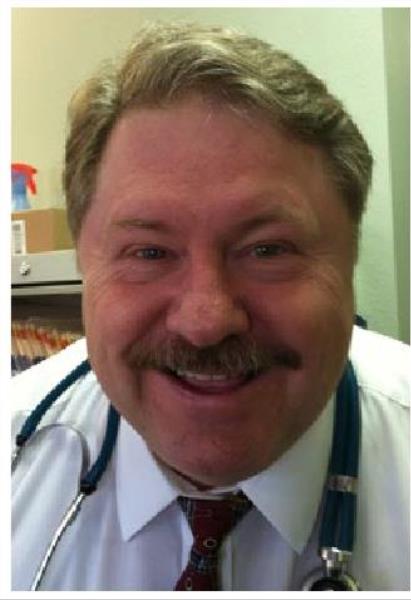
Dr. Laurence Hicks is a Board certified Osteopathic Family Physician and a Chiropractic physician nutrition specialist. He practices full time, and has, for over 35 years. As an avid teacher in medicine, Dr. Hicks has trained many medical, chiropractic PA and NP students and practitioners. He is currently the instructor of the Clinical Nutrition Certification modules which lead to an Advanced practice licensure for qualified Idaho chiropractic physicians. Tel: 208-733-444.
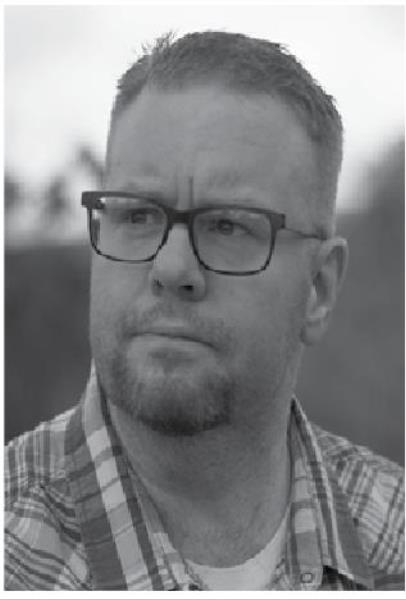
Ben Hicks, N.D., D.M.Sc., PA-C, is a naturopath and physician assistant with over 20 years of experience in natural medicine and holistic psychiatry. He specializes in integrative approaches to mental health and currently practices in outpatient holistic psychiatry. Dr. Hicks is the author of Natural Psychopharmacology Prescriber’s Guide and Hicks Quick Psych Reference, providing practical resources for clinicians navigating holistic and psychopharmacological treatment.
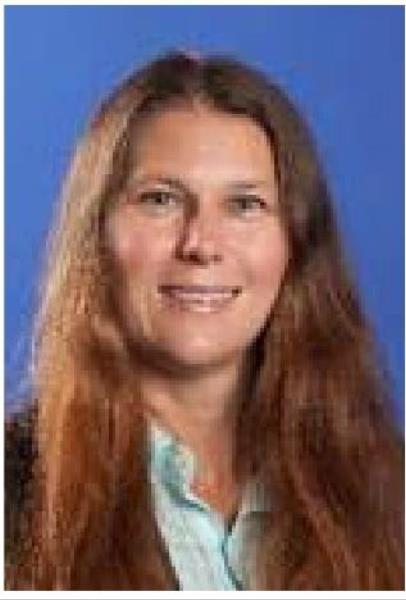
Michele Kershner earned her Bachelor of Science in Nursing (BSN) in 2017 from Wilkes University. She successfully passed the NCLEX and holds the RN in Pennsylvania. Has engaged in graduate work at Georgetown University for the Family Nurse Practitioner program. Most recently, completed the N.D. Curriculum at College of Southern Idaho and was awarded a N.D. degree at California University and is a Registered N.D. in Idaho.
1. Wikipedia. Eclectic Medicine [Internet], San Francisco: Wikipedia, com. Available from: https://en.wikipedia.org/wiki/...
2. Wikipedia. Chiropractic [Internet], San Francisco: Wikipedia, com. Available from: https://en.wikipedia.org/wiki/...
3. Bellamy J. Chiropractic scope ofpractice includes... well, yon won t believe it. Science-Based Medicine [Internet], 2014 August 7. Available from: https://sciencebasedmedicine.o...
4. Hicks L, Hicks N, Booth D. Oregon: the state with the original advanced chiropractic scope of practice [Internet], Miami: The American Chiropractor. 2020 July 1. Available from: https://theamericanchiropractor. com/article/2020/07/01/oregon-the-state-with-the-original-advanced-chiropractic-scope-of-practice
5. Hicks L, Montecalvo N. Determining the course of chiropractic's destiny [Internet], Miami: The American Chiropractor. 2019 September 1. Available from: https://theamericanchiropracto...
6. Hicks L, Hicks G, Hicks LV. Utah's chiropractors, determining their own destiny, via a unique and interesting advanced scope of practice [Internet], Miami: The American Chiropractor. 2019 December 1. Available from: https://theamericanchiropracto... utahs-chiropractors-determining-their-own-destiny-via-a-unique-andinteresting-advanced-scope-of-pra
7. https://bluemarbleuniversityme...
8. State of New Mexico: New Mexico Board of Chiropractic Examiners [Internet], Santa Fe: New Mexico Regulation and Licensing Department. 2015 January 31. Available from: https://www.rld.nm.gov/ uploads/files/Chiro%20Rules%20and%20Laws.pdf
9. Hicks L. New Mexico chiropractic physicians: a pattern of advanced practice with primary care privileges [Internet], Miami: The American Chiropractor. Available from: https://theamericanchiropracto...
10. Hicks L. Florida state authorizes chiropractic physicians specific advanced practice [Internet], Miami: The American Chiropractor. 2020 January 1. Available from: https://theamericanchiropracto...
11. Brown S. Can DCs get certified in acupuncture? [Internet], Lakewood Ranch, Florida: Chiropractic Economics. 2018 June 12. Available from: https://www.chiroeco.com/certi...
12. Board of Naturopathic Care. Statutes, Rules, and Policies [Internet], Boise, Idaho: Division of Occupational and Professional Licenses. Available from: https://dopl.idaho.gov/nhc/nhc...
13. Arizona State Legislature. Fact Sheet for SB 1163 [Internet], Phoenix, Arizona: Arizona State Legislature. Available from: https:// www.azleg.gov/legtext/561eg/2R...
14. Arizona State Board of Homeopathic and Integrated Medicine Examiners. About Licensure in Arizona [Internet], Phoenix, Arizona: Official Website of Arizona. Available from: https://homeopath.az.gov/ sites/default/files/forms/LICENSE%20INFORMATION%20%20 9%2015%2015_0.pdf.
15. Homeopath Las Vegas. How to become a Homeopathic Practitioner [Internet], Las Vegas, Nevada: Las Vegas Homeopathy. Available from: https://homeopathlasvegas.com/... c-pr actiti oner/
16. 2024 Nevada Revised Statutes. Chapter 630A - Homeopathic Physicians, Advanced Practitioners of Homeopathy and Homeopathic Assistants NRS 630A.293 - Advanced practitioners of homeopathy: Certification; qualifications; authorized services [Internet], Justia U.S. Law. Available from: https://law.justia.com/codes/n...
17. Nevada Legislature. Chapter 630A: Homeopathic physicians, advanced practitioners of homeopathy and homeopathic assistants [Internet], Carson City, Nevada: Nevada State Legislature. Available from: https://www.leg.state.nv.us/nr...
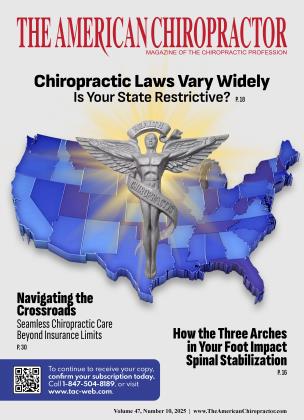 View Full Issue
View Full Issue






